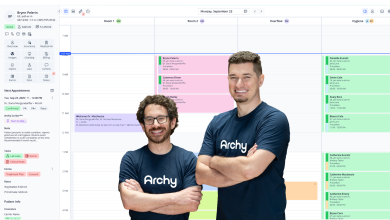Think about the last time you had a blood test. The phlebotomist probably made it look easy—quick smile, rubber tourniquet, little pinch, done. But behind that calm efficiency? Hours of training, nerves, practice, and more than a few sweaty palms in the beginning. That’s what a Phlebotomist Course in Australia is really about. It’s not just “learning to draw blood.” It’s learning to do it safely, smoothly, and with enough confidence that the person in your chair doesn’t bolt for the door.
Let’s be honest—people faint. Veins roll. Needles can make even grown adults act like children. And yet, phlebotomists manage to keep it all together. So how do students get from shaky-handed beginners to the professionals who barely flinch? Let’s pull back the curtain.
Before the First Needle
Here’s the thing: a Phlebotomist Course doesn’t start with a needle in your hand. It starts with rules. Hygiene, anatomy, infection control. The kind of stuff that feels… well, a little boring on paper. But it’s the safety net. Without it, nothing works.
You learn the invisible details—where the veins are, how blood moves, why one vein’s a golden ticket and another’s a nightmare. Gloves on. Sharps in the right bin. Wash your hands like you’re auditioning for a surgical drama. At first, it feels robotic. Later, it’s instinct.
Plastic Arms, Fake Blood
Surprise: your first “patients” aren’t patients at all. They’re mannequins. Plastic arms filled with mock blood. Weird? Absolutely. But also kind of genius. You can miss the vein fifty times and no one yelps.
It’s practice without fear. Insert. Withdraw. Tape. Repeat. Over and over until your hands stop trembling. A Phlebotomist Course eases you into it—like training wheels before the real ride.
The First Real Arm (Gulp)
Eventually, the mannequins retire, and your classmates become your first “volunteers.” That first time is sweaty-palms territory. You’re holding a sharp needle and someone is trusting you not to make a mess of it. Your hands shake. Their eyes darted. But the instructor is hovering, ready to nudge you in the right direction.
And here’s where it clicks: it’s not just about the needle. It’s about people. Talk to them while you prep. Joke if you can. Reassure if you can’t. A Phlebotomist Course teaches that too—how to read a face, calm nerves, and keep the room from feeling like a horror film.
Repetition Builds Confidence
One successful draw doesn’t make you a phlebotomist. It’s the hundred that follow. Veins that collapse. Tubes that don’t fill. Patients who insist, “No one ever finds a vein in me.” You learn patience. Persistence. And that not every stick is perfect.
By now, a Phlebotomist Course has you drawing on all types of veins, using different tubes for different tests, even handling heel pricks or finger pricks. Those tiny details—like which colour tube is for which test—matter just as much as the poke itself.
Stepping Into the Real World
Then comes placement. This is where the “classroom bubble” bursts. One day you’re working on classmates. Next, you’re in a real clinic or hospital, dealing with strangers. Some are calm. Some twitch. Some eye you suspiciously like you’re about to rob them.
And placements are fast-paced. You learn speed without sloppiness. You learn to adapt when the vein disappears mid-draw. You learn that fainting patients are not a theory—they’re real, and sometimes they’re in your chair. That’s when the safety drills you practised in class suddenly make sense.
More Than Just Needles
Here’s the part nobody tells you: phlebotomy isn’t really about needles. It’s about trust. A Phlebotomist Course teaches you technique, sure. But it also builds your soft skills—eye contact, tone of voice, how to keep someone from panicking when they see the needle glint.
Because in the end, you’re not just collecting blood. You’re holding someone’s hand through a moment of vulnerability. And that’s a bigger responsibility than most people realise.
The First Victory
Every phlebotomist remembers the first clean, solo draw. Needle in. Blood flowing. No drama. The patient smiles. You smile. That rush—that moment—is what all the practice is for. A Phlebotomist Course is built around giving you those wins. Small ones at first, then bigger. Until one day, you’re the calm face in the clinic making it look easy.
So, What’s It Really Like?
Practical training in a Phlebotomist Course looks like nerves, mistakes, and repetition. Like mannequins that don’t complain and classmates who do. Like the jump from safe practice rooms to chaotic clinics. And somewhere in that mess, it transforms you.
By the end, you walk out not just with technical skill, but with resilience. With confidence. And with the knowledge that every vial of blood you collect is a piece of someone’s healthcare journey.
If you’re weighing up a Phlebotomist Course in Australia from NK Training, just know this: it’s not just about the poke. It’s about patience, people, and practice. And yes—it’s worth it.




